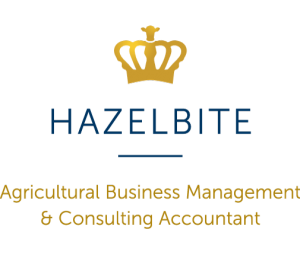Some clients are younger and less experienced, others have been in the business for decades, but regardless of size or experience, many top producers have a few things in common. They extract the expertise and skills of those around them and work hard to document their progress and financial information.
Financial Reporting
Typically year-end is the time we think about tidying up the things we haven’t got round to, preparing accounts and budgeting for the coming year. But why are we not looking at our financial reporting as an ongoing process? Think of it as a fluid tool to help guide decision making and adjust course when confronted with something unexpected. This would bring fewer surprises come year-end and give the tools for producers to challenge inputs and relationships at any time and steer operational success sooner, rather than later.
Many successful producers don’t consider financial reporting an annual task. They constantly monitor their numbers and use the data to pressure test and re-route their plan accordingly. To be in good standing with your lender, accurate financial statements and projections are a must, but top producers see it as more than just something they need to have to appease their lender, they use it as a tool to help them assess and reach their business goals.
Projections and Cost of Production
A projection is one of the best decision making tools available to you. It outlines expected performance as well as cash income and expense for a certain period of time, and helps you determine peak overdraft needs as well as understand your cash needs. Successful producers have a projection and understand what their cost of production is.
If you’re not 100% certain of your breakeven point, work it out! It’s a simple matter of understanding the price necessary to cover all operational costs and inputs. Calculating your cost of production starts with looking at annual production, then look at all expenses, fixed and variable, as well as non-cash expenses. Remember, your projection — and therefore cost of production — is unique to you and your operation. Nobody else’s is the same. When you’re putting together a projection it’s time to be realistic, not overly optimistic. Whether its tons per acre, litres of milk produced, or mortality, it’s vital to be accurate with expenses.
From simple spread sheets, to sophisticated software, there are different farm management tools that meet the needs of different operations and operators. Choose the method that you are comfortable with and create a system you can stick with. Consistency and diligent attention to inputs and margins are the key factors in positioning yourself for success during compressed prices. Adopting a tool you can manage and that you will use can help make the difference between operational survival and success.
